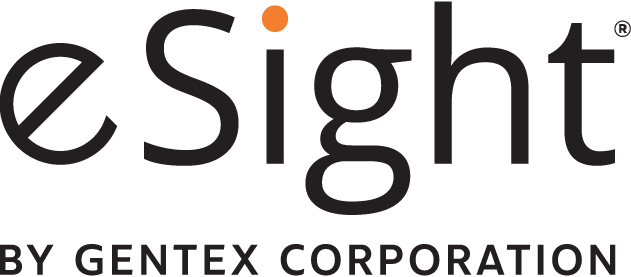Jeanette Contant-Galitello is an eSight coach who lives with Peters anomaly. Also known as the musician Kiskadee, she is a classically trained pianist and soulstress, who writes, arranges, and produces her own lush and sensual style of music. In this segment, Kiskadee speaks about what goes into creating a track, and her advice on how to get into producing music. She also features a track that she produced for her friend and fellow singer, Amy Barbera! You can listen to the podcast here, or continue reading below.

Production Equipment and Process
Main Recording Area
In Kiskadee’s recording studio, she has:
- An SSL (Solid State Logic) console
- An IsoBox which isolates the sound
- A keyboard
- Vocal booths with microphones and vocal deflectors
- Two sets of studio monitors
- A primary workstation with headphones and a handmade desk and chair
“My workstation here is what generates the sounds for me. It’s basically a keyboard generator as all the sounds come from my computers,” explains Kiskadee.
Vocal Booths
In her vocal booths, she has different microphones for various purposes. “I will use one microphone for lead vocals, and then another microphone for backing vocals which compliment the lead vocals and bring out different qualities and textures in the tune,” describes Kiskadee. The microphones are surrounded by vocal deflectors, which help to absorb echo in the room.

Mixing
Kiskadee has beyerdynamic headphones, which are specialized headphones for recording that are designed to lock sound in for the wearer. Kiskadee explains that for mixing purposes, it is better that the headphones do not make the music sound too nice or fancy, but rather a bit flat so she can mix it properly. She has two sets of studio monitors functioning as speakers as one is very flat, which is again useful for mixing.
Rehearsal Room
Next door to her recording studio, she also has a space for her R&B band to rehearse.
Producing Amy Barbera’s Song
Kiskadee recounts how Amy came to her with a song that she wanted to have produced. Amy sang it to her as they sat at her grand piano, while Kiskadee fiddled around with potential chords for the song. Once Amy clarified that she wanted her song to have a 40’s sound, Kiskadee’s creativity and perfect pitch worked in tandem as she heard the chords coming together in her head. Once she began to play it on the piano, the sound immediately clicked for both of them. At 6:33 in the above podcast, the final version of Amy’s swinging song “My Sweet Pea” is played.

Amy Barbera.
How to Start Producing Your Own Music
How She Got Started
When asked about how someone can get started on becoming a music producer, Kiskadee recalls that the best learning curve for her was to deal with the “hard nuts and bolts,” meaning to manually have her hands on the keys and knobs, and tweaking various ones to see what they did.
Listening to Music
She emphasizes the importance of listening to lots of music in different styles. Although she was initially exposed to classical music, she has also been influenced by jazz and various icons like Hoagy Carmichael and Edith Piaf. She highlights listening to the textures and sounds in different songs, and learning how they give each song a distinctive personality.
Questions to Think About when Listening to Music
A few questions that she recommends to reflect on when listening to music include:
- When are certain elements brought in and taken out?
- What personality does the song have?
- What distinctive sound does the artist have and how?
- What textures are introduced by different instruments?
Crucially, asking yourself why these decisions were made, is the most important part of learning how to produce music.
Experimenting with Mixing
She also recommends that beginners experiment with mixing. Even Garage Band is a good place to start. She adds that purchasing a drum machine could be a next step for someone who felt more comfortable with mixing, and wanted to create their own beats.

